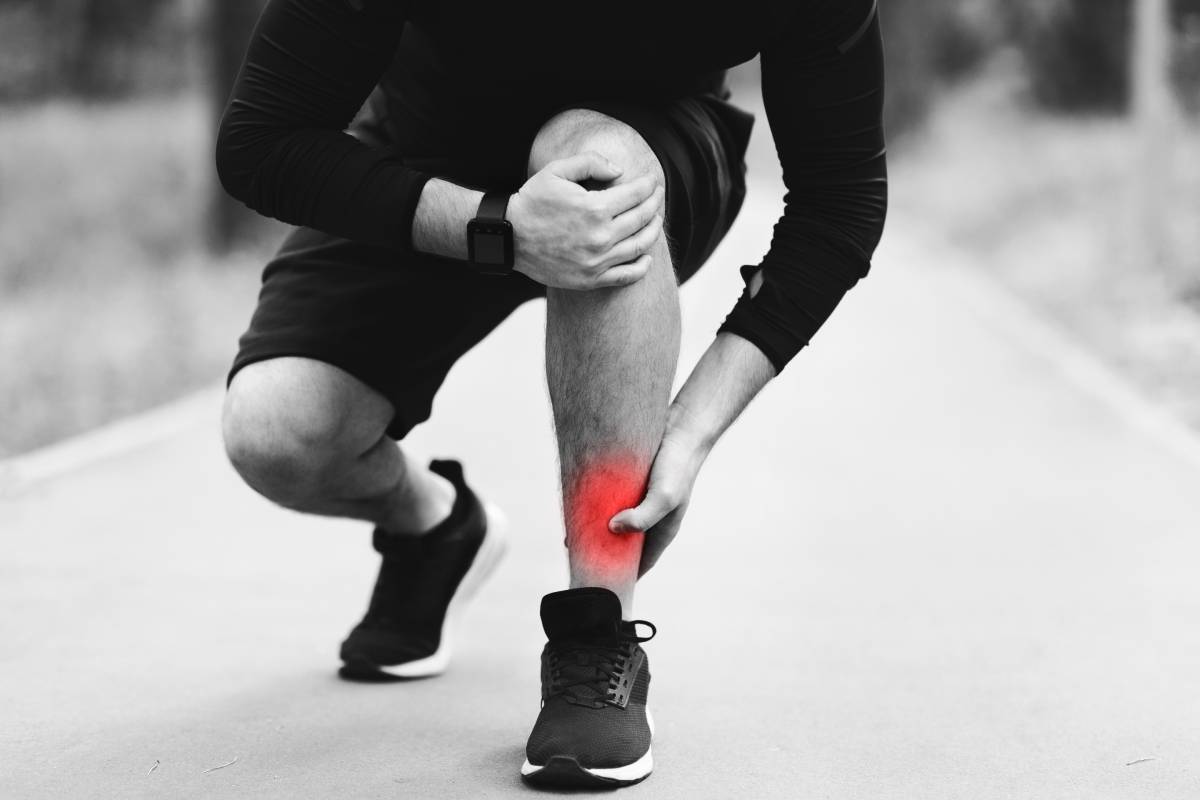Simple Physical Therapy Remedies for Shin Splints

Shin splints are a common exercise-related problem and are most frequently associated with running. Also called Medial Tibial Stress Syndrome, this condition is characterized by pain and tenderness along the tibia, the large bone in the lower legs [1-3]. Pain due to shin splints can be sharp or dull and can occur in one or both legs [1]. Mild swelling in the area is also possible [2]. People who frequently engage in high-impact activity, such as running and dancing, as well as people who quickly increase activity levels, such as military recruits, are more likely to develop this condition [1-3]. Multiple prevention and treatment strategies exist for shin splints, including physical therapy.
Current research considers shin splints to ultimately be an overuse problem. In particular, excessive stress due to repetitive activity leads to inflammation of the muscles and connective tissue next to the tibia. This inflammation then leads to pain and discomfort. The connective tissue that holds muscles to the tibia can stretch or tear due to high-impact activities [1]. Flat feet, rigid arches, and improper footwear increase the risk of developing shin splints [2].
It is important to seek a professional diagnosis (typically involving a discussion of medical history, a physical exam, and potentially an x-ray), as other conditions may also cause shin pain and may require a different treatment routine. Stress fractures in the shin — small fracture(s) in the tibia due to overuse — have similar causes and symptoms; these can typically be identified by medical scans. Tendinitis can be diagnosed with the help of an MRI [2].
Several treatment modalities can improve shin splint-associated pain and speed up recovery. Footwear should fit well and have robust cushioning to help absorb the impact of steps [1]. Orthotics may also be recommended. As with many musculoskeletal injuries, resting and icing the affected area are often effective strategies. When taken as directed, non-steroidal anti-inflammatory drugs such as ibuprofen may help alleviate pain [1,2]. In situations where swelling occurs alongside pain, compression bandages may be appropriate. Though surgery has been used to treat extreme cases of shin splints, it is unclear whether this approach is effective [2].
Strategies that aim to strengthen the affected area and related areas, such as physical therapy, are also important for treating shin splints. When exercising, it is important to gradually increase activity levels, with proper rest built into the exercise routine. Cross training with low-impact activities decreases musculoskeletal stress — for example, swimming, cycling, and elliptical training [1]. Improving movement and form during high-impact activities helps to further minimize stress. In particular, foot and ankle stretches are recommended [3].
Calf raises strengthen calf muscles, which are involved in absorbing impact. Stretching the anterior tibialis muscle helps with both strengthening and recovery; the kneeling shin stretch and seated shin stretch are good options. The same motivation applies to calf stretches, especially for the gastrocnemius, the largest calf muscle, and the soleus [3]. These muscles are responsible for calf flexion, which occurs in walking, jumping, and other movements that involve pushing down with the foot [3,4]. The gastrocnemius and soleus can be stretched individually or together, such as with the Achilles tendon or towel calf stretch [3].
Recovery from shin splints depends on age, health, physical condition, and commitment to the treatment routine. It typically takes 1-3 months to completely heal [2,3]; however, there are a variety of simple remedies for strengthening the lower leg and for reducing pain. A physical therapy professional can assess shin pain and help determine individualized treatment for shin splints.
References
1. Johns Hopkins Medicine. “Shin Splints,” (n.d.). Johns Hopkins Medicine, Health, Conditions and Diseases. Available: https://www.hopkinsmedicine.org/health/conditions-and-diseases/shin-splints
2. Alaia MJ. “Shin Splints,” (2019). American Academy of Orthopaedic Surgeons, OrthoInfo, Diseases & Conditions. Available: https://orthoinfo.aaos.org/en/diseases–conditions/shin-splints/
3. Kibet K. “8 foot and ankle stretches to improve movement and help prevent shin splints,” (2020). Medical News Today. Available: https://www.medicalnewstoday.com/articles/shin-splint-stretches
4. Binstead JT, Munjal A, & Varacallo M. “Anatomy, Bony Pelvis and Lower Limb, Calf,” (2020). StatPearls. Available: https://www.ncbi.nlm.nih.gov/books/NBK459362/
